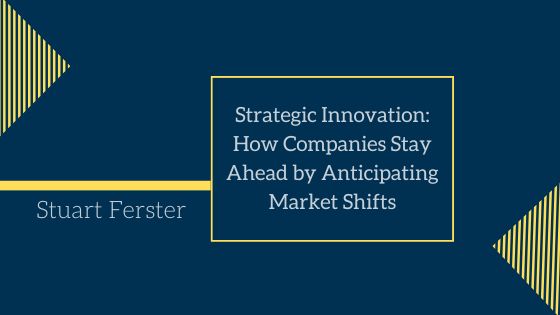In today’s fast-paced business environment, staying ahead of the competition requires more than reacting to changes—it requires anticipating them. Companies that succeed over the long term are those that embrace strategic innovation, proactively identifying emerging trends and adjusting their strategies before the market shifts. Strategic innovation is not just about creating new products or services; it is about aligning innovation with business objectives and customer needs to achieve sustainable growth.
Understanding Strategic Innovation
Strategic innovation involves deliberately exploring opportunities to create value in ways that differentiate a business from its competitors. It goes beyond incremental improvements and focuses on bold, forward-thinking initiatives that anticipate future demands. This type of innovation integrates market research, competitive intelligence, and creative problem-solving into the company’s strategic planning.
By anticipating shifts in consumer behavior, technology, regulations, and global trends, companies can position themselves to capitalize on opportunities before others recognize them. Strategic innovation ensures that a business is not simply reacting to change but shaping its own path forward.
The Role of Market Intelligence
A key component of strategic innovation is market intelligence. Companies must actively monitor trends, customer preferences, and competitor activity to identify signals of change. This data-driven approach allows leaders to spot gaps in the market, understand emerging customer needs, and assess potential risks and opportunities.
For example, companies in the retail industry that anticipated the rise of e-commerce early were able to invest in digital platforms and supply chain infrastructure, gaining a significant advantage over competitors who were slower to respond. By leveraging insights, businesses can make informed decisions and prioritize initiatives that will have the greatest impact.
Fostering a Culture of Innovation
Strategic innovation is not solely the responsibility of the executive team. It requires a culture where creativity, experimentation, and collaboration are encouraged at all levels of the organization. Employees should feel empowered to challenge existing assumptions, propose new ideas, and learn from failures.
Companies that foster a culture of innovation often create cross-functional teams to tackle complex problems, bringing diverse perspectives together to generate creative solutions. This collaborative approach not only enhances innovation but also accelerates the implementation of new strategies.
Aligning Innovation with Business Goals
Innovation without direction can be costly and unfocused. Strategic innovation aligns new initiatives with broader business objectives, ensuring that resources are invested in projects that support long-term goals. This alignment allows companies to balance risk and reward effectively, making innovation both sustainable and impactful.
Continuous Adaptation and Learning
Markets are constantly evolving, and strategic innovation is an ongoing process. Companies must regularly evaluate the effectiveness of their initiatives, learn from successes and failures, and adjust strategies as needed. This continuous learning cycle ensures that a business remains agile and responsive to emerging trends.
Staying Ahead of the Curve
In an environment defined by rapid change, strategic innovation is a critical differentiator. Businesses that anticipate market shifts, embrace new ideas, and align innovation with their goals are better positioned to capture opportunities, outpace competitors, and drive long-term growth. By thinking ahead and innovating strategically, companies can transform potential challenges into avenues for success.
Strategic innovation is not simply about keeping up; it is about staying ahead, shaping the market, and ensuring the business thrives in an ever-changing world.

